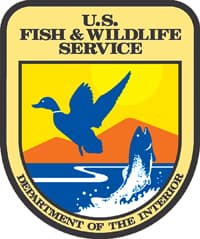U.S. Fish and Wildlife Service Designates Critical Habitat for Pacific Coast Western Snowy Plover
OutdoorHub 06.18.12

The U.S. Fish and Wildlife Service (Service) today designated approximately 24,527 acres of coastal habitat in Washington, Oregon and California as critical habitat for the Pacific Coast population of the western snowy plover, a small shorebird protected as a threatened species under the federal Endangered Species Act (ESA). The designation revises the Service’s 2005 critical habitat designation for the species.
Designated critical habitat includes unique and increasingly rare coastal beach-dune ecosystem habitat along the Pacific Coast essential to the survival and recovery of the plover. The final designation represents a reduction from the 28,379 acres initially proposed by the Service in 2011, but an increase from the 12,150 acres designated in 2005. A total of 47 units have been designated in California, nine in Oregon, and four in Washington.
Using the best available scientific information, the Service determined that the plover requires additional critical habitat to offset anticipated adverse effects of rising sea level due to climate change, and to reflect increased understanding of the important role that unoccupied habitat can provide for the conservation and recovery of imperiled species. In addition, it reflects the incorporation of newer scientific data about habitat use by the western snowy plover and improved mapping methods that allow the Service to more accurately assess intertidal zone habitat along the water’s edge.
Critical habitat is a term in the ESA that identifies geographic areas containing features essential for the conservation of a threatened or endangered species, and which may require special management considerations or protection. Designation of critical habitat does not affect land ownership, establish a refuge or preserve and has no impact on private landowners taking actions on their land that do not require federal funding or permits. It is also used to notify other Federal agencies of areas that must be given special consideration when they are planning, implementing, or funding activities that may affect designated critical habitat.
The Pacific Coast western snowy plover is a small shorebird with pale brown to gray upper parts, gray to black legs and bill, and dark patches on the forehead, behind the eyes, and on either side of the upper breast. The birds nest on the mainland coast, peninsulas, offshore islands, bays, estuaries, salt ponds, and rivers of the Pacific Coast from southern Washington to southern Baja California, Mexico. They are distinct from western snowy plovers that breed inland.
It is estimated that about 2,500 Pacific Coast western snowy plovers breed along the Pacific Coast from early March to late September. Prior to 1970 the coastal population was thought to have nested at more than 50
locations along the coast. Today, only 28 major nesting areas remain. In addition to loss of nesting habitat due to development, the size of the Pacific Coast western snowy plover population has also declined.
Human activity on beaches, such as walking, jogging, walking pets, operating off-road vehicles, and horseback riding, during the plover breeding season can inadvertently cause destruction of eggs and chicks. Encroachment of exotic European beach grass into nesting areas and predation are other primary factors in the decline of the Pacific Coast western snowy plover.
Since the species was protected as threatened, many local groups have voluntarily worked to protect plovers and their breeding areas, and to help educate the beach-using public about the bird’s needs. In many areas, beach users have cooperated with local interests to improve the breeding situation for plovers.
The Service excluded about 3,797 acres in parts of Washington, Oregon and California from revised critical habitat based on partnerships with Tribes, approved Habitat Conservation Plans, or other management plans in place that provide a conservation benefit to the western snowy plover.
The Service will continue to work closely with interested parties to implement actions to protect and conserve the plover’s habitat and increase breeding success. Our priority is to make implementation of the Act less complex, less contentious and more effective. We seek to accelerate recovery of threatened and endangered species across the nation, while making it easier for people to coexist with these species.
A final economic analysis, also released today, identifies the potential incremental cost of the critical habitat designation at approximately $266,000 over a 20-year timeframe (based on a 7 percent discount rate). More than 70 percent of the estimated impacts are related to military activities on Vandenberg Air Force Base which did not have an Integrated Natural Resource Management Plan (INRMP) in place at the time the Service published the proposed critical habitat rule. The Air Force Base has now completed an INRMP, and is exempted from the revised final critical habitat designation.

